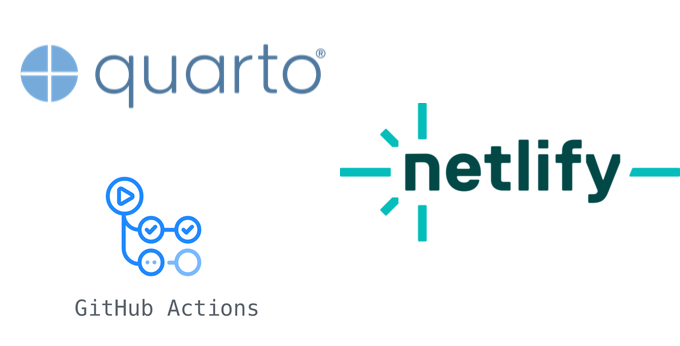Migrating from Jekyll to Quarto
Goodbye Jekyll. Hello Quarto!
When I started blogging in 2020, I used Jekyll as my static site generator because it’s popular and has lots of resources on the internet. Back then, I had zero knowledge of HTML/CSS to begin with, and barely knew anything about Python and R. As I learned and wrote more, I did have some pain points with my blog and decided to migrate to Quarto. Here is my experience.
Why I left Jekyll
It’s not the best workflow for technical writing, as Jekyll uses plain markdown files. If I wanted to present the code output, I had to copy the output manually and paste into my post. An alternative is to use R Markdown, which requires combining
blogdown+ Hugo, but I’ll explain later why I didn’t go down that route.Most Jekyll blogs don’t have a global search, and only search results from titles and tags, which I don’t think adds much value. I can probably add the global search by a third-party service, but it will be a complicated task.
Few issues with my theme. In my Jekyll blog I used klisé theme. Although I like the minimalistic look, the layout design does not emphasize the title. As I add more posts, it becomes difficult to catch the topic in the first glimpse. Another issue is the tag system, it’s not structured as the way I want it.
Hello, Quarto

What is Quarto? To put it simple, it is a new format .qmd document that can be rendered to different output such as pdf, html, presentations, website, etc. It supports not only R, but also Python, Julia, and more.
It makes Quarto a very powerful tool for technical writing due to its versatility. To me, this is the deal breaker. It’s like an enhanced version of R Markdown but can also generate websites.
Migration process
Helpful resources
The setup is super easy thanks to the official documentation. It’s the best go-to resource and very well-writen, I followed it without issue for setup. Beatriz Milz’s post is also very detailed and has lots of screenshots. For style customization, Albert Rapp’s ultimate guide will be a helpful resource.
Theme and configuration
I didn’t spent much time on the theme, because Quarto’s default looks very nice out-of-the-box. There aren’t many to choose anyways though. My theme is based on Frank Harrell’s blog, and I did few tweaks on the styles.scss.
If you are looking for inspiration, check out Quarto Gallery for some real examples.
Convert old naming convention
My blog on Jekyll and Quarto have different folder structure to store my posts. For example, in my Jekyll blog, my post is stored in:
├── _posts
│ ├── 2023-02-21 My blog post
│ │ ├── 2023-02-21-My blog post.mdAnd the URL is the name of md file excluding the date, such as:
https://mydomain.com/my-blog-post
However, in my Quarto blog, the desired structure is:
├── post
│ ├── 2023-02-21-my-blog-post
│ │ ├── index.qmdQuarto will pickup the name of the post folder as the URL, and it will be
https://mydomain.com/post/2023-02-21-my-blog-post/
This means I need to rename all post files and folders. For the former, it can be easily done in R:
old.names <-
list.files(path = ".",
pattern = "md$",
recursive = TRUE)
new.names <-
gsub(pattern = "^(.*)$",
replacement = "index.qmd",
x = old.names)
new.names <- file.path(dirname(old.names), new.names)The script will rename all .md files to index.qmd. I don’t have to change it to .qmd, but… why not.
As of folders, I simply use MacOS’s Finder to replace the whitespace in batch.
Redirect broken links using Netlify
Netlify has the ability to redirect URL by putting a _redirects file in the publish folder. I stole borrowed Danielle Navarro’s script to generate the file, with minor changes to accomondate my own naming convention.
Now I have a _redirects file, and I put it under root folder for Github Actions to use later.
Add comments section
My old blog used utterances for comments. I don’t think it fits my most audience since it requires a Github login. For that reason, I switched to Waline following their getting started tutorial.
Build Quarto from Github Actions to Netlify

Here is the workflow when I update my site:
I add my post, use
quarto previewto review the site locallyPush the files to Github repo (without render)
Github Actions will render and publish the site to Netlify
Quarto’s publishing guide is extremely helpful to prep and set up the Netlify + Github Actions workflow, but I need to consider the Netlify _redirects file. The reason is, if I follow the workflow file in the guide, it will also render the _redirects file every time and I will need to deal with installing R/Python/dependencies in the workflow file as well.
The good news is, I don’t need to update _redirects every time. The data is the same, since it converts only the old post links. So I did a trick by uploading the _redirects file to root folder, and using the Github Actions to move it to _site folder after it completes the render. Here is my workflow file:
.github/workflows/quarto_publish.yml
on:
workflow_dispatch:
push:
branches: main
name: Quarto Publish
jobs:
build-deploy:
runs-on: ubuntu-latest
steps:
- name: Check out repository
uses: actions/checkout@v3
- name: Set up Quarto
uses: quarto-dev/quarto-actions/setup@v2
- name: Render Quarto Website
uses: quarto-dev/quarto-actions/render@v2
with:
to: html
- name: Add Netlify redirects
run: mv _redirects _site # Move the _redirects file to _site folder
- name: Publish without render
uses: quarto-dev/quarto-actions/publish@v2
with:
target: netlify
render: false # Set false to prevent overriding _site by re-render
NETLIFY_AUTH_TOKEN: ${{ secrets.NETLIFY_AUTH_TOKEN }}This method has the edge compared to other workflows:
Does not require waiting for the local render, which could take a few minutes.
Avoid uploading the bulky
_sitefolder to the Github repoNo need to render
_redirectsevery time, thereby avoiding the need to deal with installing R/Python/dependencies in Github Actions, which is required if you follow Danielle Navarro’s method.
Do you need to migrate to Quarto?
I think Quarto will benefit you if you:
Write technical content, especially with different programming languages
Use R Markdown but also write in Python and want something native rather than the
reticulateengineWant a simple and functional website and don’t care for fancy themes
Just like to write in a visual editor1
What about blogdown/Hugo?
Blogdown + Hugo has been popular among R communities. However, after reading a few posts, I chose not to go with it because of its compatibility issue. Fixing things when Hugo updates and Blogdown breaks seems like a lot of work, and many people have complained about it.
Also, it’s difficult to find a theme I like. I’ve grown tired of it and just want to stick with something simple so that I can focus more on content. Quarto is new, but it looks like a great option and is growing very quickly. I’m sure there will be more customization options/extensions available in the near future.